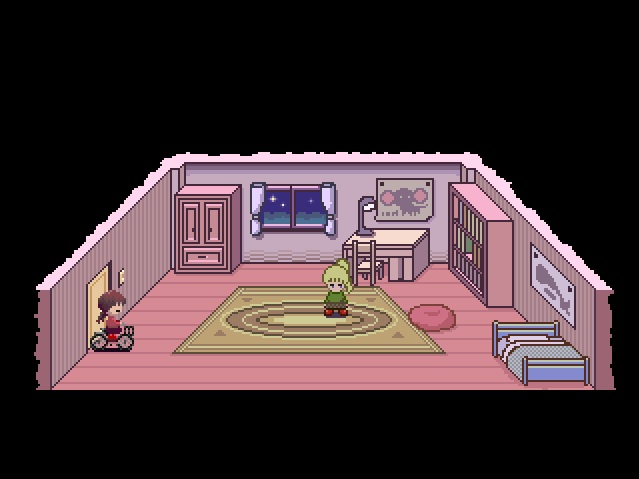When I first played Yume Nikki I had to navigate Japanese-language file sites, download an unofficial English patch and install a Japanese character pack onto my laptop so I could run the Japanese version of RPG Maker 2003.
More than a decade later, the seminal Japanese horror indie title Yume Nikki is finally debuting on Steam, the most internationally visible platform in the game’s more than 13 year history. It’s a safe bet that in the next few months, more people outside of Japan will play Yume Nikki than ever have before.

Poniko’s bedroom in Yume Nikki.
What effect does the platform have on the game? Part of what made Yume Nikki so appealing to a teenage version of myself was that it seemed to come packaged in mystery and uncertainty. In a time when publishers revealed their games’ deepest secrets in press releases, Yume Nikki was a game about which we knew almost nothing short of what Japanese imageboard posters had found trawling through its source code. The developer, Kikiyama, whose real name, age and gender remain unknown, stopped updating the game in 2007 before mysteriously disappearing from the web. One popular rumor among the fan community was that they had died, though subsequent official merchandise has made this theory unlikely.
What Could More Exposure Bring?
Nevertheless, I’m happy to see Yume Nikki get the spot in the limelight it has deserved for years. Even in its limited Western exposure, it was one of the most influential games of the 2000’s, having spawned a fan community devoted to making unofficial follow-up projects, some of which are longer and larger than the original. If that kind of dedication came out of the shadows, what will come from a widespread release?



